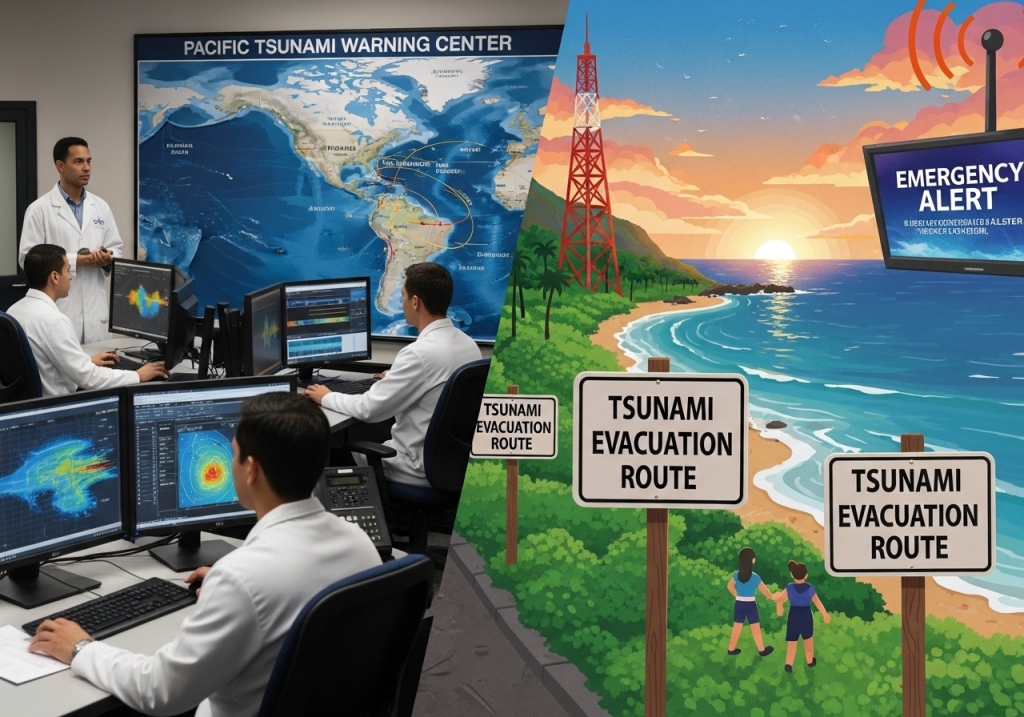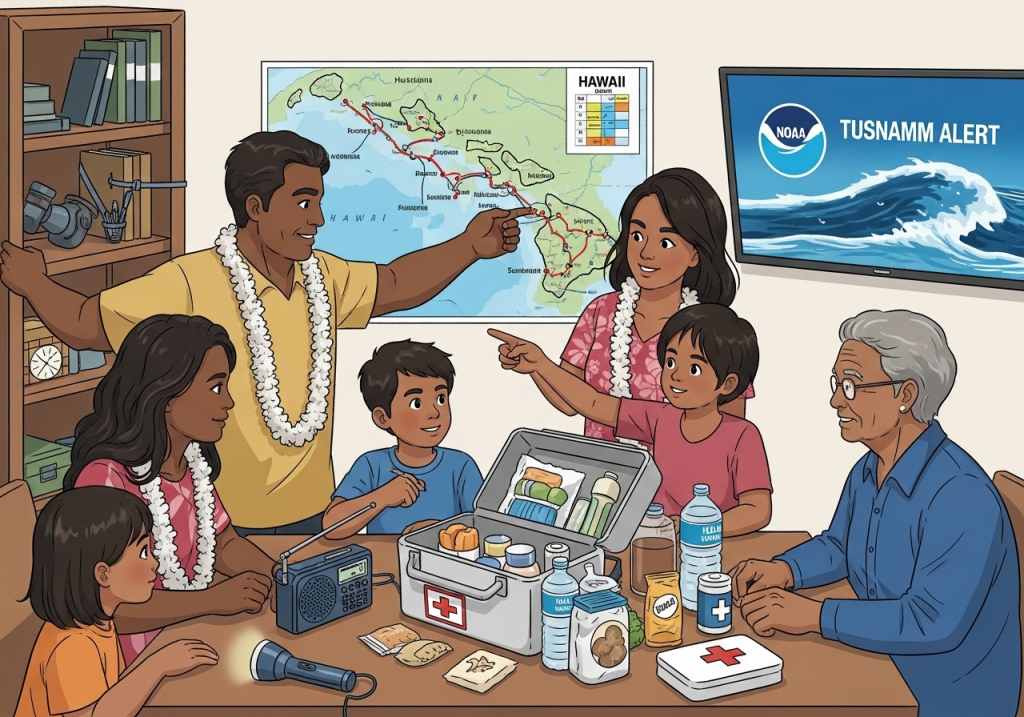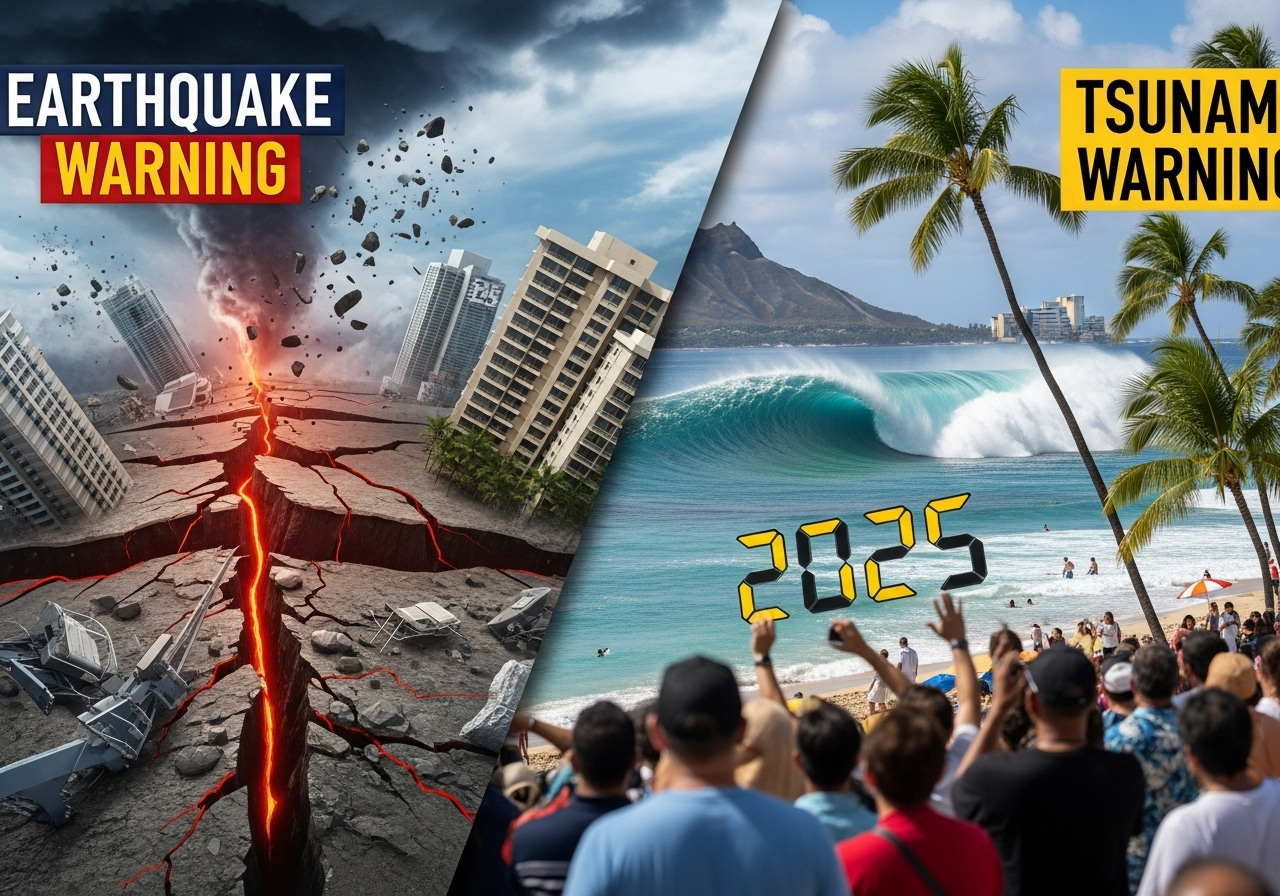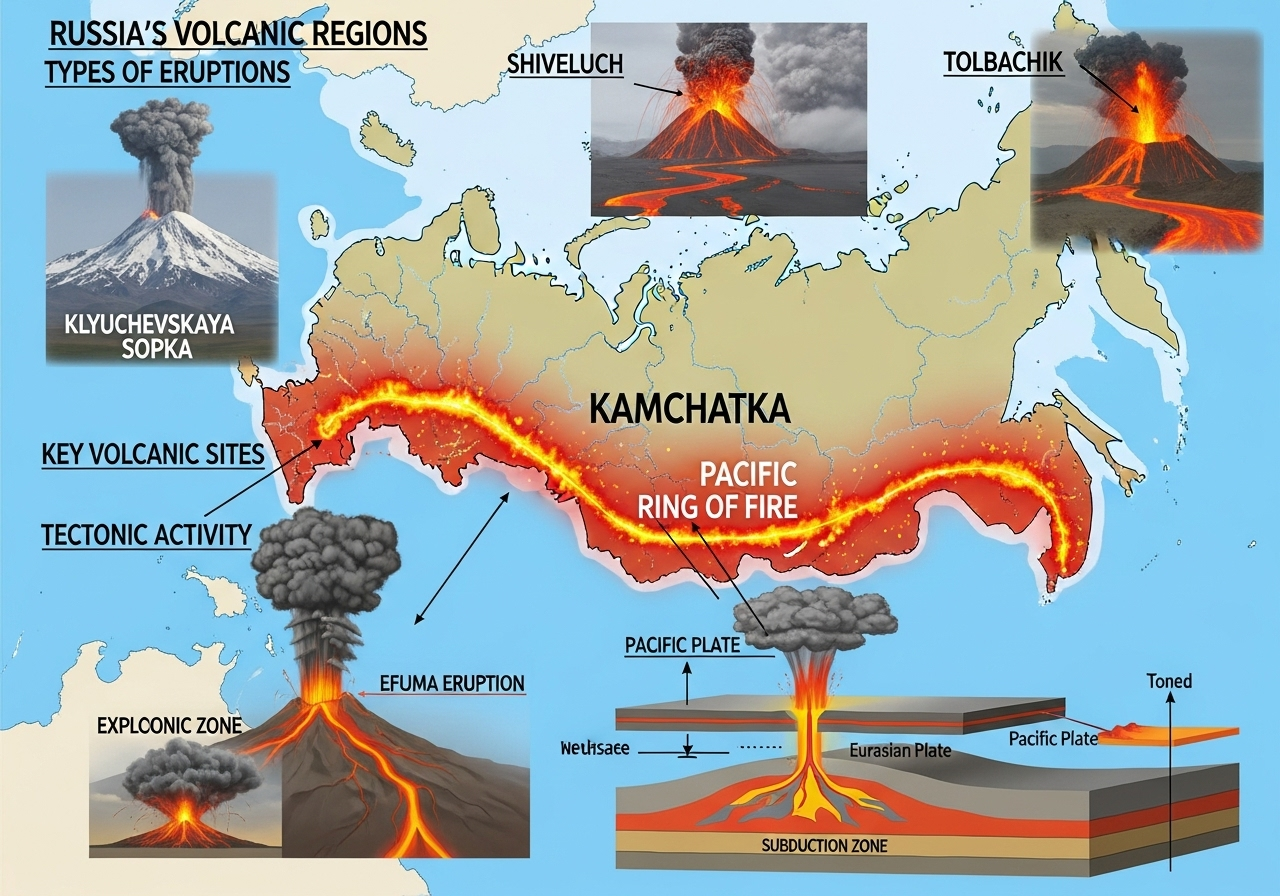Hawaii, an archipelago located in the Pacific Ocean, is no stranger to natural disasters. Among the most concerning are earthquakes and tsunamis, which can cause widespread devastation. Given Hawaii’s geographical position, understanding earthquake and tsunami warnings, their impact, and how to stay prepared can significantly reduce the risks to residents and visitors alike.
Earthquake Risks in Hawaii
Hawaii is located near the Pacific Ring of Fire, an area known for its seismic activity. This makes the islands vulnerable to both large and small earthquakes. Earthquakes in Hawaii are usually caused by tectonic shifts along the fault lines beneath the ocean floor, which can result in massive underwater disturbances, leading to potential tsunamis.
Though Hawaii does not experience earthquakes as frequently as regions like California or Alaska, the islands remain susceptible to significant tremors. The Pacific Tsunami Warning Center (PTWC), located in Honolulu, plays a pivotal part in monitoring and issuing warnings for these seismic events.
The Role of Tsunami Warnings
When an earthquake occurs, especially under the ocean, it can displace a vast amount of water, creating waves that travel at great speeds. If these waves reach shore, they can result in devastating tsunamis. The PTWC is responsible for monitoring these events and providing timely warnings to Hawaii’s residents.
Types of Tsunami Alerts:
- Tsunami Watch: This indicates a potential for a tsunami, but it hasn’t been confirmed yet. During this phase, residents are advised to stay informed.
- Tsunami Warning: A warning means that a tsunami has been confirmed or is imminent. This is a time-sensitive alert that calls for immediate evacuation from low-lying coastal areas.
- Tsunami Advisory: While not as severe as a warning, an advisory indicates that there is a small but measurable tsunami expected. Residents may not need to evacuate, but should remain vigilant.

Understanding the Warning System in Hawaii
Hawaii has an advanced warning system in place to help reduce the loss of life and property during earthquakes and tsunamis. Here are the critical warning systems that ensure timely alerts:
- PTWC Alerts: The PTWC uses seismic data and tidal gauges to monitor any earthquake activity in the Pacific Ocean. They send out alerts for potential tsunamis if there’s a high likelihood of danger.
- Emergency Alert System (EAS): This system broadcasts tsunami warnings and other important alerts over radio, television, and digital platforms.
- Tsunami Evacuation Routes: Hawaii’s local governments have designated evacuation routes in coastal areas that will lead residents to higher ground in case of a tsunami warning.
What Should You Do When You Receive a Warning?
If you receive a tsunami or earthquake warning in Hawaii, here’s what you should do:
- Immediate Evacuation: If a tsunami warning is issued, evacuate immediately. Head to higher ground or inland to avoid low-lying coastal areas.
- Stay Informed: Listen to official announcements and keep track of the situation via radio, TV, or the emergency alert system.
- Do Not Wait for the First Wave: Tsunamis come in multiple waves, and the first one may not always be the largest. It’s pivotal to stay at a safe elevation until authorities give the all clear.

How to Prepare for Earthquake and Tsunami Emergencies in Hawaii
Preparation is key to reducing the impact of an earthquake or tsunami. Here’s how you can stay prepared:
- Create an Emergency Kit: Keep non-perishable food, water, medications, first aid supplies, flashlights, and batteries in an emergency kit. Include important documents, a movable bowl, and any necessary particulars.
- Establish an Emergency Plan: Work with your Family or household to develop a clear emergency evacuation plan. Familiarize yourself with the rifle evacuation routes in your area.
- Stay Informed: Make sure you have access to the latest updates through NOAA’s Tsunami Alerts or apps that provide real-time information about seismic activity.
- Secure Your Home: Reinforce furniture and other items in your home that may become hazards during an earthquake. Be sure to secure heavy objects that could fall or cause injury.
What Happens After a Tsunami or Earthquake?
In the aftermath of an earthquake or tsunami, Hawaii’s emergency management agencies will continue to monitor the situation, issue updates, and provide shelter and recovery assistance to those affected. In some cases, it may take days or even weeks to assess the damage fully. Residents should continue to follow official instructions for re-entry, recovery, and rebuilding.
Final Thoughts
Hawaii’s vulnerability to earthquakes and surges makes preparedness vital for both residents and callers. Understanding the warning systems, knowing the necessary actions to take during an emergency, and preparing for the worst can make a significant difference in ensuring your safety. Always stay informed and be ready to act swiftly when cautions are issued. With the right knowledge and planning, you can minimize the risks posed by these natural disasters.
In the event of a tsunami or earthquake, remember: safety is the top priority, and preparation can save lives.





